I’ve had the pleasure of tasting wine and sharing a meal with winemaker Rob Mann twice in the past few weeks. Rob’s another ‘new sensation’ two decades and 6 generations in the making. It’s a privilege to taste with someone with such vast knowledge and depth of experience, and his latest release wines from the often-overlooked Western Australian region of the Swan Valley are super.
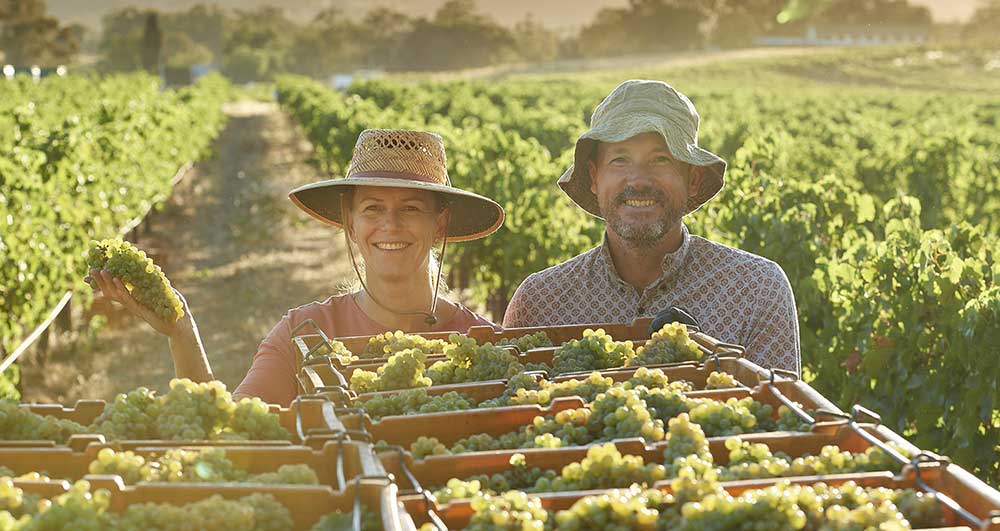 Rob and Gen Mann.
Rob and Gen Mann.
When most people think of WA wine they think of Margaret River, but it was the Swan Valley, located about 25 km northeast of Perth in the upper reaches of the Swan River, that actually first put the west on the map.
Vines were planted here in 1829 by botanist Thomas Waters, making it the second oldest region in the country after the Hunter Valley. Well known producer Sandalford planted vines in 1840 and by the 1850s the region was planted with table grapes and fruit, much of which was used in the production of dried fruit. There were 3 significant waves of migration: post WWI, during the 1920s and post WWII. Of particular note was the predominance of Croatians who transformed the area from traditional agriculture to vineyards. The region flourished, and at one stage had more operating wineries than either NSW or Victoria.
These days there are over 40 wineries in the Swan and while a range of wine styles are made, the most planted variety here is chenin blanc. The University of Adelaide’s snappily titled ‘Which Winegrape Varieties are Grown Where?’ provides an extraordinary breakdown of the world’s grape varieties. Its figures, although slightly dated (2016), still give a good picture, showing South Africa with 55% of the world’s plantings of chenin blanc, followed by France with 29%, daylight to third spot, Argentina with 7% and Australia in 5th spot with 1%, the majority of which is grown in the Swan Valley.
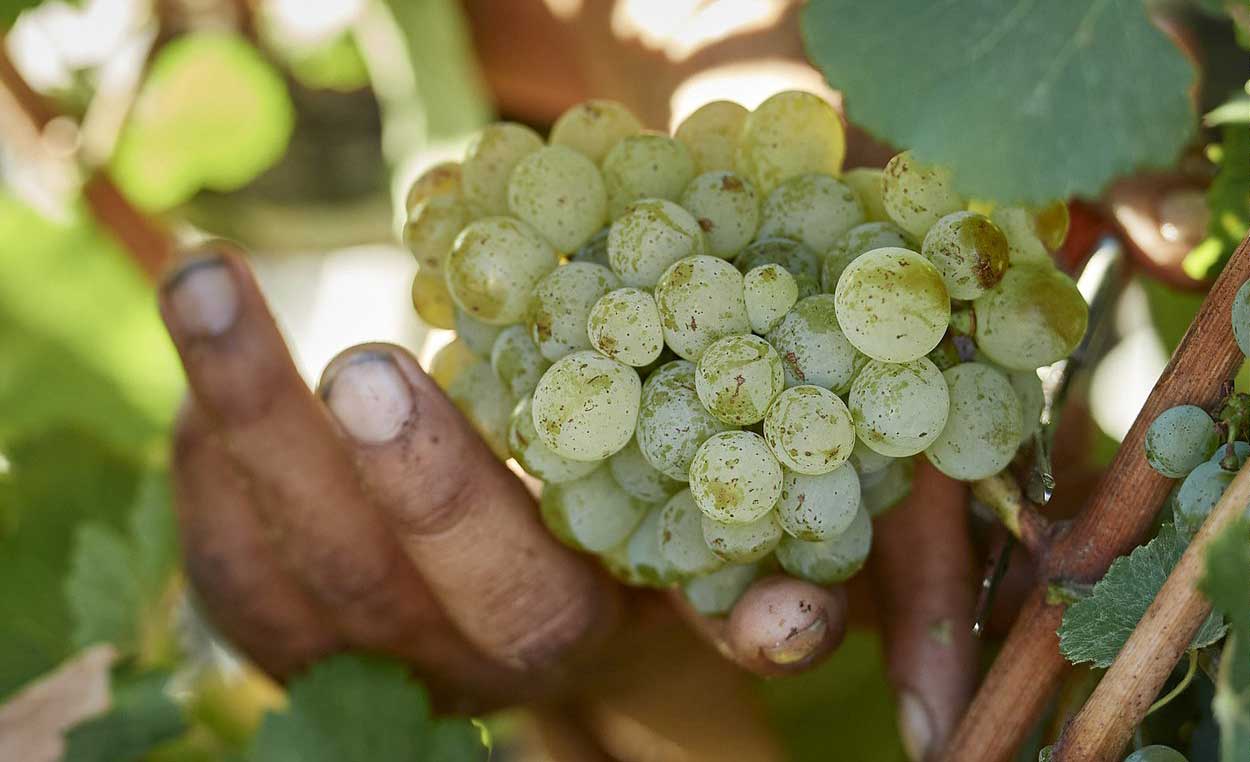 Chenin grapes from Rockett’s Vineyard.
Chenin grapes from Rockett’s Vineyard.
Chenin is not well known in Australia, but Jancis Robinson MW& describes it as “probably the world’s most versatile grape” and I’d have to agree. It’s a wonderful variety, enjoyed dry through to sweet, as well as in sparkling form. In her book Wine Grapes, Jancis Robinson refers to “the real chenin flavours of honey, straw and apples.” She also classifies grapes of the world as classic, major or other, with chenin achieving classic status. One of chenin’s distinctive characteristics is firm acidity, a quality I love as it brings freshness and vivacity. The firm acidity also means that, along with riesling, chenin is one of the few white varieties that can genuinely age.
I think chenin’s one of the most overlooked and undervalued varieties and in the right place, and right hands, is capable of producing exceptional wines.
I’ve offered chenin blanc many times over the years: from Vouvray, Savennières, Saumur and even South Africa (where it’s known as steen), but the only one I’ve offered to date from Australia has been an earlier vintage of this wine made by Rob, from our chenin capital, the Swan.
The name most associated with Swan Valley chenin, indeed the Swan Valley in general, is without doubt legendary winemaker Jack Mann. A tireless worker, Jack started at Houghton Wines in his teens and succeeded his father George as chief winemaker in 1930 at the age of just 24. He held the position until 1972, by which time he had completed an astounding 51 consecutive vintages with the company. Aside from his many other achievements, Mann is perhaps best known as the creator of the chenin dominant Houghton’s White Burgundy, which gained both national and international notoriety when it won the 1937 and 1938 Melbourne Wine Shows. The wine went on to become one of Australia’s most successful and popular wines, and I well remember selling cases of it when first working in the trade back in the 80s.
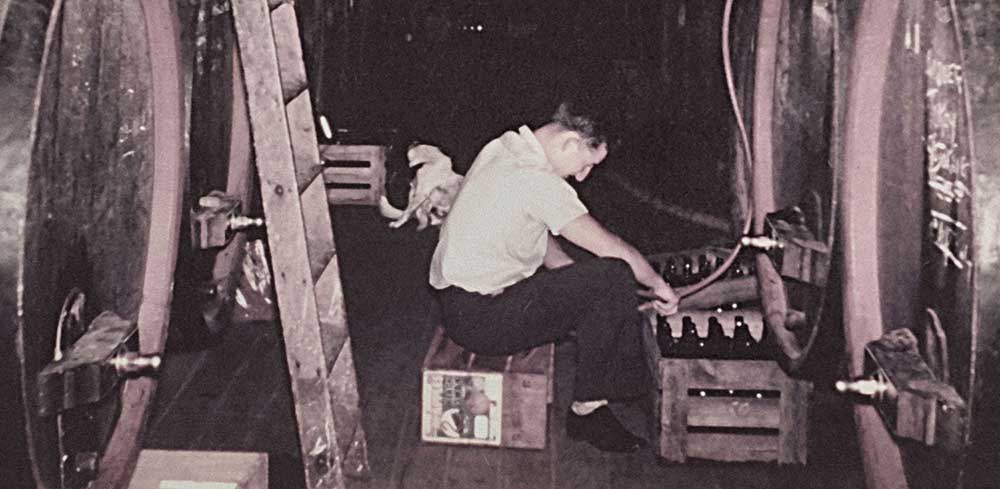 Jack Mann in the winery.
Jack Mann in the winery.
“In winemaking, you have to accumulate an enormous amount of knowledge before you realise you know nothing. And when you realise you know nothing you start to learn.” Jack Mann.
Jack died in 1989 at the age of 83 and in the same year the Wine Press Club of Western Australia recognised his contribution by establishing the Jack Mann Memorial Medal, the state’s most prestigious wine award, which is conferred annually for outstanding contribution to the State’s wine industry.
Jack Mann was a hugely significant influence on the Western Australian wine industry, and his legacy continues not just through this award, but also through his family, whose impact continues to be significant to this day. Jack had four children, three of whom are involved in wine.
“The Mann family are winemaking royalty in Western Australia.” Huon Hooke.
Tony Mann and his wife purchased a property in the Swan Valley in 1984 and progressively planted it out with the help of their son Rob. They planted cabernet (1986), chenin (1992), tempranillo (2002) and malbec (2012). Aside from the first few years when they were getting established, the vines have been dry grown (ie. no irrigation) and the vineyard has always avoided the use of chemicals. It became fully organic in 2017, gaining full certification in July 2022.
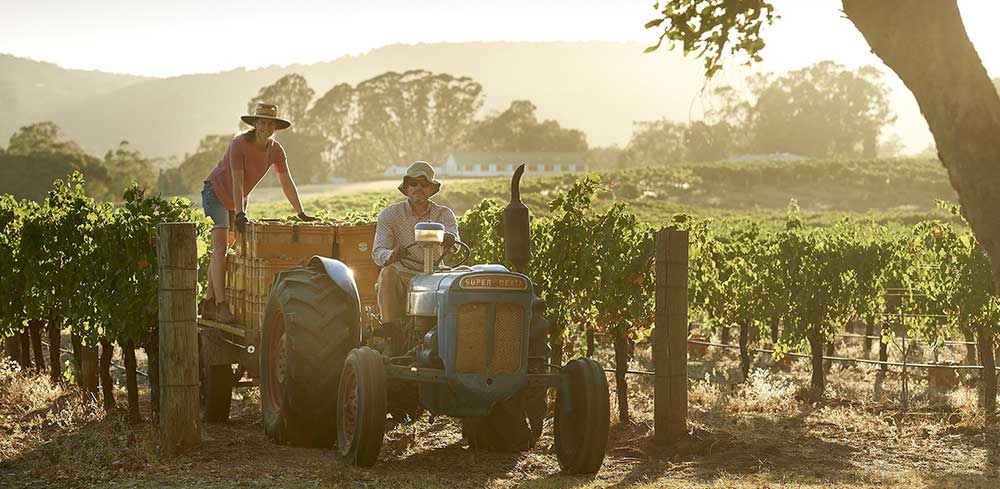 The fruit from the estate traditionally went to Lamont Wines, Tony’s sister’s winery, but Tony’s son Rob Mann and his wife Genevieve had the idea of Corymbia, combining their considerable talents.
The fruit from the estate traditionally went to Lamont Wines, Tony’s sister’s winery, but Tony’s son Rob Mann and his wife Genevieve had the idea of Corymbia, combining their considerable talents.
Rob is the sixth generation of his family to make wine for a living. Prior to Corymbia he’d already gained recognition as a talented winemaker. Rob was senior winemaker at Hardy Tintara, before becoming chief winemaker at Cape Mentelle. During his tenure, Cape Mentelle was twice awarded Producer of the Year and Rob was awarded Winemaker of the Year. He was then appointed to run LVMH’s Newton Vineyard in the Nappa, where he worked from 2014-2017. Genevieve’s no slouch either. She’s worked as a winemaker in South Africa, France, California and SA before becoming winemaker at one of my favourite WA wineries, Howard Park. Together they have some serious winemaking chops.
The name Corymbia comes from Corymbia calophylla, formerly known as Eucalyptus calophylla, and commonly referred to as Marri, a red gum native to southwestern WA. It produces a beautiful white flower, known as a Marri blossom, that blooms around the same time as the grapes ripen.
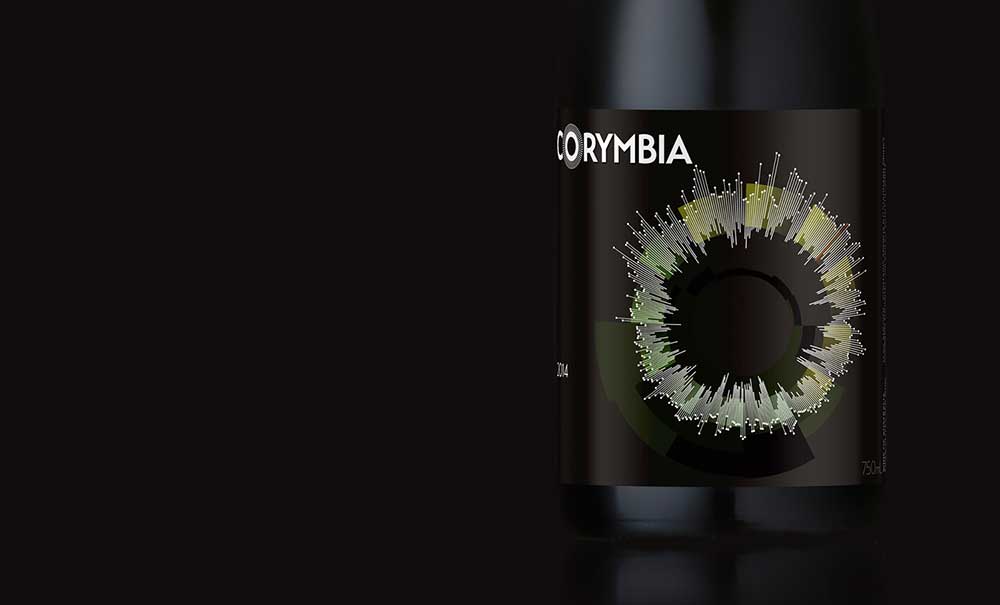 Rob made the first Corymbia wine in 2013 in a corner of the Cape Mentelle winery, where he was working at the time. 2014-2017 saw him flying back and forth from his next job in the Nappa, not only to continue making Corymbia wines, but also to see his family who were still living in Australia. Quite a commute. Rob finally returned to the Swan in 2017, focussing his energy on Corymbia.
Rob made the first Corymbia wine in 2013 in a corner of the Cape Mentelle winery, where he was working at the time. 2014-2017 saw him flying back and forth from his next job in the Nappa, not only to continue making Corymbia wines, but also to see his family who were still living in Australia. Quite a commute. Rob finally returned to the Swan in 2017, focussing his energy on Corymbia.
Corymbia is the distillation of four generations and over a century of the Mann family’s unique experience and knowledge of the Swan Valley. Rob and Genevieve Mann are taking this incredible legacy in a new direction and in doing so are creating one of the country’s most exciting new ventures.
“The wines under the Corymbia label have been outstanding.” Gourmet Traveller Wine.
“Corymbia chenin will be The Next Big Thing... Whoosh. Belter of a wine.” Mike Bennie, The Wine Front.
Corymbia’s cool label was designed by Emma Mann, Rob’s graphic designer sister. From a distance it resembles a Marri blossom (Corymbia Calophylla), but if you look carefully, the 365 stamen are actually a graph of temperature and rainfall for the vintage year, with the harvest dates in red. Très clever.
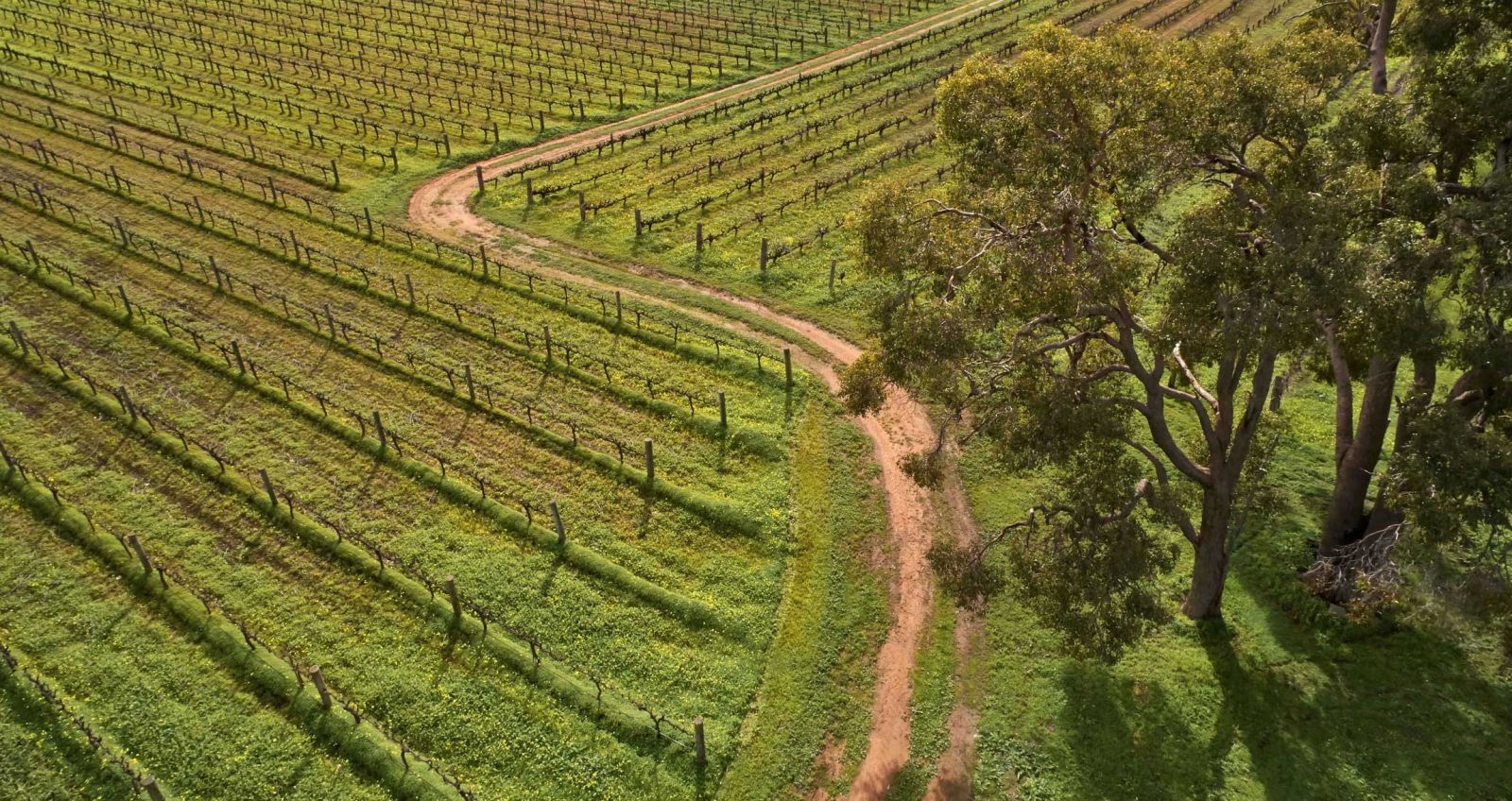 I spoke with Gen a few days ago, who told me the 2023 vintage was “extremely good in WA”, with the season enjoying good winter rain and no heat spikes, that are often a feature around Christmas and New Year. The result, she said, was balanced fruit, which means fully ripened, but still with plenty of fresh acidity… the elusive combo. Interestingly she mentioned how good the odd vintages in WA have been, with ‘19, ’21 and ’23 enjoying milder conditions compared to the hotter ‘18, ‘20 and ‘22, with the 2024 vintage the hottest and driest on record! The wines from the ’23 vintage are “beautiful, balanced, not too showy and are good for the long haul.” Sounds perfect - if you can keep your hands off them.
I spoke with Gen a few days ago, who told me the 2023 vintage was “extremely good in WA”, with the season enjoying good winter rain and no heat spikes, that are often a feature around Christmas and New Year. The result, she said, was balanced fruit, which means fully ripened, but still with plenty of fresh acidity… the elusive combo. Interestingly she mentioned how good the odd vintages in WA have been, with ‘19, ’21 and ’23 enjoying milder conditions compared to the hotter ‘18, ‘20 and ‘22, with the 2024 vintage the hottest and driest on record! The wines from the ’23 vintage are “beautiful, balanced, not too showy and are good for the long haul.” Sounds perfect - if you can keep your hands off them.
 Corymbia Rocket’s Vineyard Chenin Blanc 2023
Corymbia Rocket’s Vineyard Chenin Blanc 2023
This wine is 100% chenin blanc, grown on Rocket’s Vineyard. Rocket was Rob’s dad’s nickname when he played cricket for Australia.
The fruit was organically farmed and harvested by hand. The grapes were whole bunch pressed (ie. not destemmed) and the juice was simply run into a combination of stainless-steel tank and seasoned French oak barriques and fermented using indigenous yeasts. The wine was then left on its yeast lees (dead yeast cells that fall to the bottom) in the same fermentation vessels, for about 6 months, before being bottled. Sounds so simple. But as always, it’s only the experts who make crafting such good wine sound so easy. Rob describes it as a “high solids, natural ferment” from which he was looking for “a delicate, classically structured wine.” After the wine was bottled, it was left to rest for a few months. The finished wine is 12.8% alcohol, sealed with a screwcap and comes in an attractively weighty bottle.
In the glass it’s a clear, very light gold. On the nose you’ll find gooseberry, nashi pear and nutty notes with a lovely leesy complexity. On the palate - fresh lime and honeydew mingle with grapefruit pith notes. This is a lovely citrus and saline mouthful with driving fresh acidity. Finish is lemony, minerally, clean, dry and refreshing. I love this wine.
“The wine smells of jasmine blossom, ruby grapefruit and freshly picked red Johnathon apples straight from the tree. Packham pears, Kumamoto oysters and beeswax fill the palate but it’s the texture that grabs your full attention. The balance at play between the juicy, saline tang and the soft, creamy, flinty notes drives home the Rocket’s Vineyard pedigree. Classic Rocket’s Vineyard Chenin Blanc at its best.”
Winemakers, Rob and Gen Mann.
“It’s driven by pear, brine, white pepper and apple flavours, though there's an aspect of cooling herbs as well. This is a tasty little number, and a sophisticated one. It pushes salt, brine and mineral notes into pure, pulpy fruit, the net effect both moreish and wonderfully food friendly. This is chenin blanc in ultra-fine form.”
95 points, Campbell Mattinson, James Halliday’s Wine Companion.
Special Value Rating.
You’ll see it on the list at Catalina, overlooking the harbour, for $80 a bottle.
Or enjoy it at home for $32 a bottle.
 Corymbia Rocket’s Vineyard Tempranillo Malbec 2023
Corymbia Rocket’s Vineyard Tempranillo Malbec 2023
Like the chenin, the fruit for this wine comes from the Rocket’s Vineyard, named after Rob’s cricket-playing dad. This vintage marks the 10th release of this Swan Valley red which is a huge milestone for Rob and Gen.
As noted above, 2023 was a beautiful, mild vintage which Rob told me allowed him to produce exactly what he wants from a Swan Valley red, a wine that’s restrained and not too alcoholic, a sometimes difficult task in such a warm region.
The wine is a field blend of 55% tempranillo and 45% malbec. A field blend means the percentages are determined by what the vineyard gives, so they may vary slightly from year to year. The certified organic grapes were hand harvested on the same day, after which the fruit was individually berry sorted and left to rest for 7 days, resulting in some initial carbonic maceration. It was then fermented to dryness in a single seasoned (old) French oak vat, then pressed out and returned to the same vat for a further 10 months of ageing. The finished wine is 13.8% alcohol and sealed with a screwcap.
Rob told me the tempranillo brings a real juicy pluminess, while the malbec brings rhubarb, mulberry, and cranberry. He also mentioned that tempranillo grown in a warm climate tends to lose its acidity, so it’s the malbec, especially when picked early, that brings the freshness as well as added complexity.
This is such a delicious wine. I love its quaffable freshness on top of smoothness and complexity.
In the glass this is a deep plummy red. On the nose you’ll find sweet rose petal and blueberry notes mingling with jubey red fruit and a wisp of mint. On the palate, pomegranate, blueberry and citrus pith – a touch of graphite on the elegantly dry finish. Firm but fine tannins give great structure. This is a deft contrast between lush aromas and a more restrained palate. Medium-bodied with lush, fresh acidity - this wine becomes rounder as it opens up. Absolutely delicious drinking.
“An aromatic pop of cherry, blueberry and Chinese five spice jumps from the glass. Medium bodied with pomegranate, cocoa and squid ink umami which fill the palate, whilst soft gravelly tannins drive home a crunchy, vibrant, juicy, fleshy, turgid, lip smacking and moreish finish!” Rob and Gen Mann.
Just released, not around town much yet, but already a great review.
“Plenty of exotic spice, liquorice, walnut, new leather, cherry, blueberry, seaweed. Medium-bodied, a lovely grainy grip and chew to tannin, cherry, boysenberry and a pippy freshness to acidity, suffused with a ferrous and ‘mineral’ feel, umami and nutty, with a bright and flavoursome finish of excellent length. Texture. Charisma. Such a good wine. All the slate and good things that the Swan Valley can deliver. Superb.”
95 points, Gary Walsh, The Wine Front.
Superb indeed.
I can offer it for $39.50 a bottle.